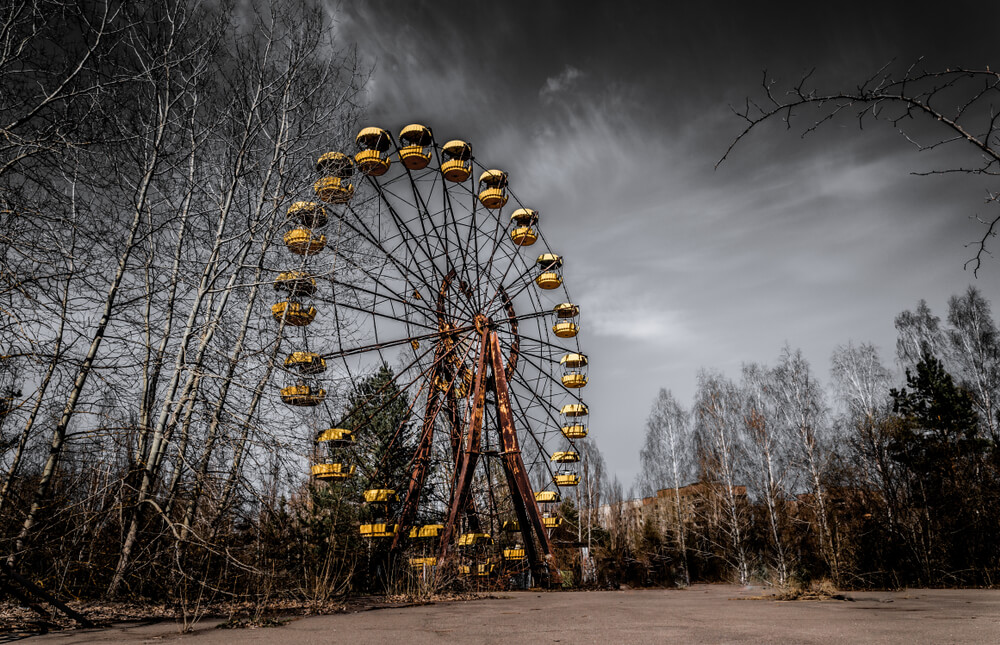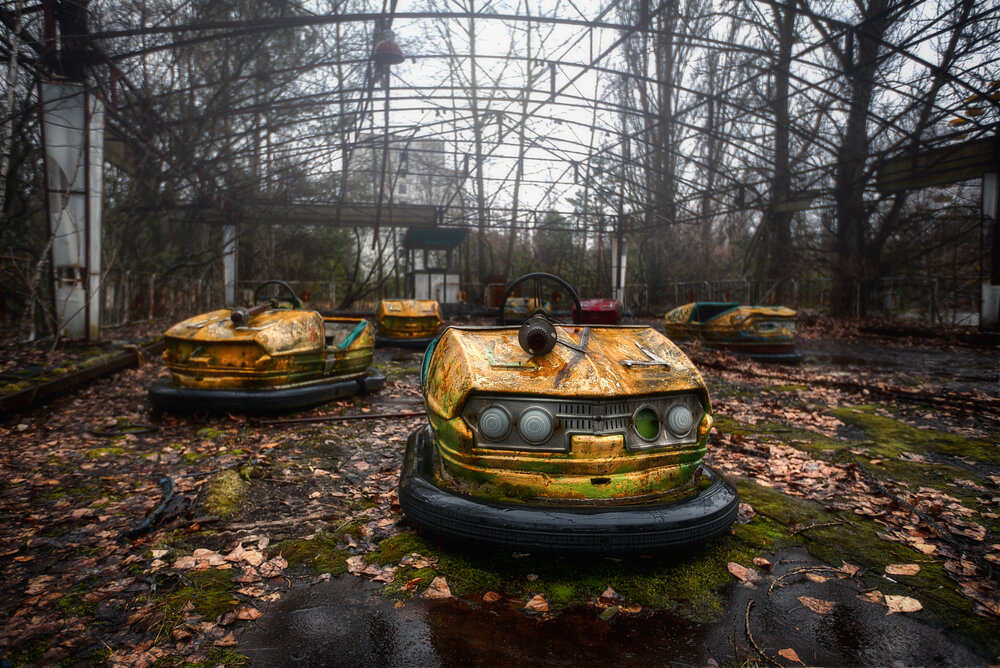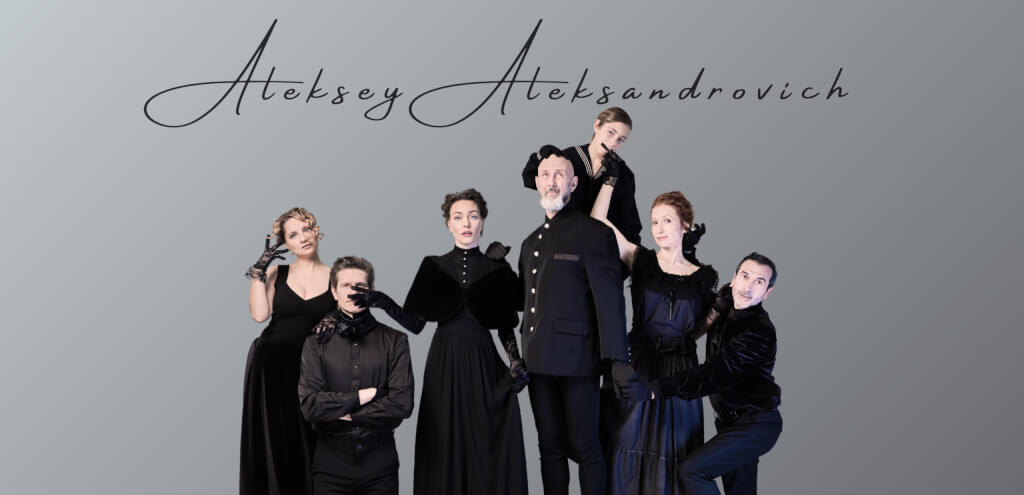'A world without people would be better': what life looks like in Chernobyl 35 years after the disaster
'26.04.2021'
Olga Derkach
April 26, 2021 35th anniversary of the accident at the Chernobyl nuclear power plant. During this time, the Zone became empty and acquired its own atmosphere and colors. One person spent almost 20 years in Chernobyl and is sure that the world without people would be better. Denis Vishnevsky, head of the radiation and environmental monitoring group of GSP Ecocenter, told the publication KyKy about his life in Chernobyl, believing physicists, and that philosophy is much more dangerous than radiation.

How he got started in the Zone
Denis Anne had an initial plan to go to work in Chernobyl, just once circumstances developed like this and he is happy about it.
“I won't say that all my life I dreamed of working in Chernobyl. It so happened that in the third year I read the book "Animals in the radioactive zone". There were recollections of a detachment of zoologists who worked in the first years after the accident. It was unusual - a completely different ecological situation. Of course, interest has arisen, - says Denis. “After graduating from the university, I learned that a vacancy for a biologist was vacant.
According to him, it was easy to get a job, even contrary to popular belief that you need excellent health to work in the Zone.
“I contacted a specialist who left my position. He gave the director's phone number, I called and we met. Further application, medical examination and recruitment. There is a myth that for such a job you have to be as healthy as an astronaut. In fact, the main thing is that there are no contraindications for working with radiation: these are any cancers and diseases of the thyroid gland, ”said Vishnevsky.
And although everyone is very afraid of exposure and its consequences, in fact, the level of radiation in Chernobyl is higher than in other parts of Ukraine, but much less than the threshold, exceeding which causes health problems.
“There is no such thing as 'on-site employee disease syndrome', although there is a lot of talk about it. We receive doses greater than the population, but less than the threshold beyond which pathologies begin. After all, oncology can manifest itself from many factors of a non-radiation nature: this is nutrition, genetics, and much more, - says Denis. - An employee receives an average of 1,5 mSv per year. To cross the threshold beyond which pathologies begin, you need 400 1,5 mSv. And radiation is not only in the Zone - a person who often flies on airplanes also receives a dose. Incidentally, this is an important reason for limiting human space exploration. "
On the subject: Both immigrants and Americans love: what they feed in the only Ukrainian banquet hall in New Jersey
“So, the first two years, since 2000, I worked in the scientific department (radioecology and radiobiology), then 15 years in the monitoring service: monitoring the radiation state of the entire exclusion zone. Now I am going to the scientific department of the Chernobyl reserve. I will be engaged in environmental research, ”the Ukrainians shared.
Portrait of a stalker
When it comes to a stalker, everyone imagines a person with weapons and full uniforms, but in reality everything is not so, in the Zone there are many people with quite ordinary professions.
“Most of the professions are quite common: drivers, accountants, cooks, electricians. At the level of low-skilled labor and ordinary professions, there are a lot of residents of the surrounding villages and urban-type settlements. The regime and the salary suit them, so it is unlikely that this is a special choice for them, - explains Denis. - Strange as it may seem, there are not very many scientists here. There is the Institute for NPP Safety Problems, which accompanies the work at the Shelter. Most scientists come here from outside organizations on expeditions. At the same time, life in the Zone is a good university. Teaches stability, for example. "
Also, the Zone is a place that tests the resilience of the body and spirit, since there are no usual social constraints, it is very easy here to slip into drunkenness or other entertainment.
“The usual constraints - families and other forms of social control - are not here. Most of the employees are in the zone four days a week, and those who have a continuous work cycle - 15 days in a row, ”says Vishnevsky.
But those who have withstood the temptation of alcohol are unlikely to resist books and philosophy, since lonely evenings need to be brightened up.
“It reads well here in the evenings. I am currently reading Sapiens Harari. By the way, after the risk of drunkenness, the second risk is a predisposition to philosophy. Here you can see a lot: how dangerous are modern technologies, how a person and his material civilization surrender without support under the onslaught of nature, - Denis notes. - One local philosopher Alexander Novikov, deputy director for safety of the Chernobyl nuclear power plant, said that future nuclear scientists should be brought here so that they understand the cost of a mistake. But everything that is said about mutant animals with shining eyes is shameless inventions. In general, radiation is a very aggressive agent, it breaks more than gives mutations. "
An ordinary day in the Zone
Day of workers of the Zone begins like everyone else. But the environment is somewhat different.
“I get up at 7:00. By eight I get to the office. For lunch, some go to the dining room, but I do not - I cook myself. Although they feed there for free. In the information and analytical department, most of the time you work with data, so you sit at the computer a lot. But quite often you have to go to the objects. We drive a company car with a whole team, - says Denis. - Many people ask me: what is most interesting there? Yes, everything is interesting! Wild animals, transformation of the built environment under the advancing nature. The advance of nature to where man used to reign. Take the city of Pripyat, for example - this is a complete victory of nature. Looking at this, you inevitably ponder, ask yourself questions. There are more atheists among the employees, but there were also believers. They are - you will not believe - physicists. "
Scientists are working tirelessly to solve the problem of storing radioactive waste, because the disaster was unprecedented and no country in the world has a solution for such a case.
“The most pressing problem of Chernobyl today is radioactive waste. A chain reaction in the sarcophagus is unlikely, but now it is the largest unorganized storage of radioactive waste. This is why it is dangerous, - emphasizes Denis. - There is a plan for the disposal of waste for 100 years. Everything is not done too quickly, and here the question is not even about money, but about the solution. This is a unique event, this has not happened before. There are no ready-made solutions and approaches. But the process is ongoing, a NSC (new containment) has been built here, and a central repository for radioactive waste is being built. It is now the largest movable building on Earth. "
This is not extreme
Ukraine has long legalized tourism in the Exclusion Zone, and now Belarus is planning to do this as well.
“From the Ukrainian side, tourism in the Zone is legal. Almost 50 people a year visit Chernobyl. This will also start soon in Belarus, they are opening a zone for tourists. But in the Belarusian zone there are no such charismatic objects as the Chernobyl nuclear power plant, Pripyat and Chernobyl-000, - explains Vishnevsky. - I realized this when I worked with a film crew from the EU. They filmed all the animalistic art in the Belarusian part, and filmed the "anchors" with us. The prices of these "tours" are very different. Conventionally, from $ 2- $ 50 is a one-day trip. Individual and multi-day excursions are more expensive. "

The computer game "Stalker" helped a lot with the promotion of the topic of tourism, at one time its fans became frequent guests of the Chernobyl zone.
“I remember the barrage of visits began after the release of the Stalker game. Now the topic has been promoted by tour operators: most of the visits are from far abroad, Europe, USA, Asia. I worked a lot with tourists, media, directors, ”says the Ukrainian.
He also notes that visiting the Exclusion Zone is not extreme, but rather an experience and understanding of the cost of a mistake.
“They say people are looking for extreme here. But this is not extreme at all: you go on a bus and go out with a guide, you go with him along a certain route. In my opinion, this is about something else: this is an experience. And of course, it is better to see the Zone with your own eyes than on the monitor screen, - says Denis. - A person looks outward, and then inward. It is no coincidence that Gorbachev spoke about nuclear war after his 1986 speech. It's creepy, but this is an opportunity to see, on the one hand, a world without people, on the other, attempts to overcome, to take control of this chaos. The possibility of war is quite real. "
World without people
“If the Zone were music, it would probably be Artemiev and Pink Floyd. Something else from "Stalker" and "Solaris" fits well into landscapes. Understand, this is a completely different rhythm. It is the "other". People are guests here, and the natural rhythm is "summer-winter", "dawn-sunset", the sound of the wind and the flow of water. Not at all the one that usually surrounds us, - says Denis. - I spent a week at our hospital in an almost empty village. Two days later, I didn't need the watch at all. The passage of the sun across the sky was quite enough for work and cooking. It turned out to be easy. Adaptation is progressing quickly - after a month, you stop noticing the ruins. You just live. You look at a world without people. And you understand that he would be more beautiful for plants and animals. "
The Chernobyl accident
The accident at the Chernobyl nuclear power plant occurred on April 26, 1986. The reactor of the fourth power unit of the Chernobyl nuclear power plant, located near the city of Pripyat, exploded. The destruction was explosive, the reactor was completely destroyed, and a large amount of radioactive substances were released into the environment. The accident is regarded as the largest of its kind in the entire history of nuclear energy, both in terms of the estimated number of people killed and affected by its consequences, and in terms of economic damage, according to "Wikipedia".
During the first three months after the accident, 31 people died, another 19 deaths from 1987 to 2004 can presumably be attributed to its direct consequences. 134 people from among the liquidators suffered acute radiation sickness of varying severity. High doses of radiation to people, mainly from the number of emergency workers and liquidators, have served or may cause four thousand additional deaths from the long-term effects of radiation. Nevertheless, these figures are significantly less than the number of victims attributed to the Chernobyl disaster by public opinion.
On the subject: 4 significant advantages of living in New York: the experience of a Ukrainian immigrant
Unlike the bombings of Hiroshima and Nagasaki, the explosion resembled a very powerful "dirty bomb" - the main damaging factor was radioactive contamination. The cloud from the burning reactor carried various radioactive materials, primarily iodine and cesium radionuclides, across most of Europe. The largest fallouts near the reactor were noted in the territories belonging to Belarus, the Russian Federation and, of course, Ukraine. The entire population - more than 30 thousand people - was evacuated from the 115-kilometer exclusion zone around the nuclear power plant. Contrary to popular belief, the Exclusion Zone affects only Ukraine and Belarus, while many believe that the accident occurred directly in Russia. Significant resources were mobilized to eliminate the consequences, more than 600 thousand people took part in the liquidation of the consequences of the accident.
The Chernobyl accident became an event of great social and political significance for the USSR. All this left a certain imprint on the course of the investigation into its causes. Specialists do not have a common opinion on the exact causes of the accident; the versions of different nuclear specialists are similar in general terms and differ in the specific mechanisms of the occurrence and development of an emergency.







